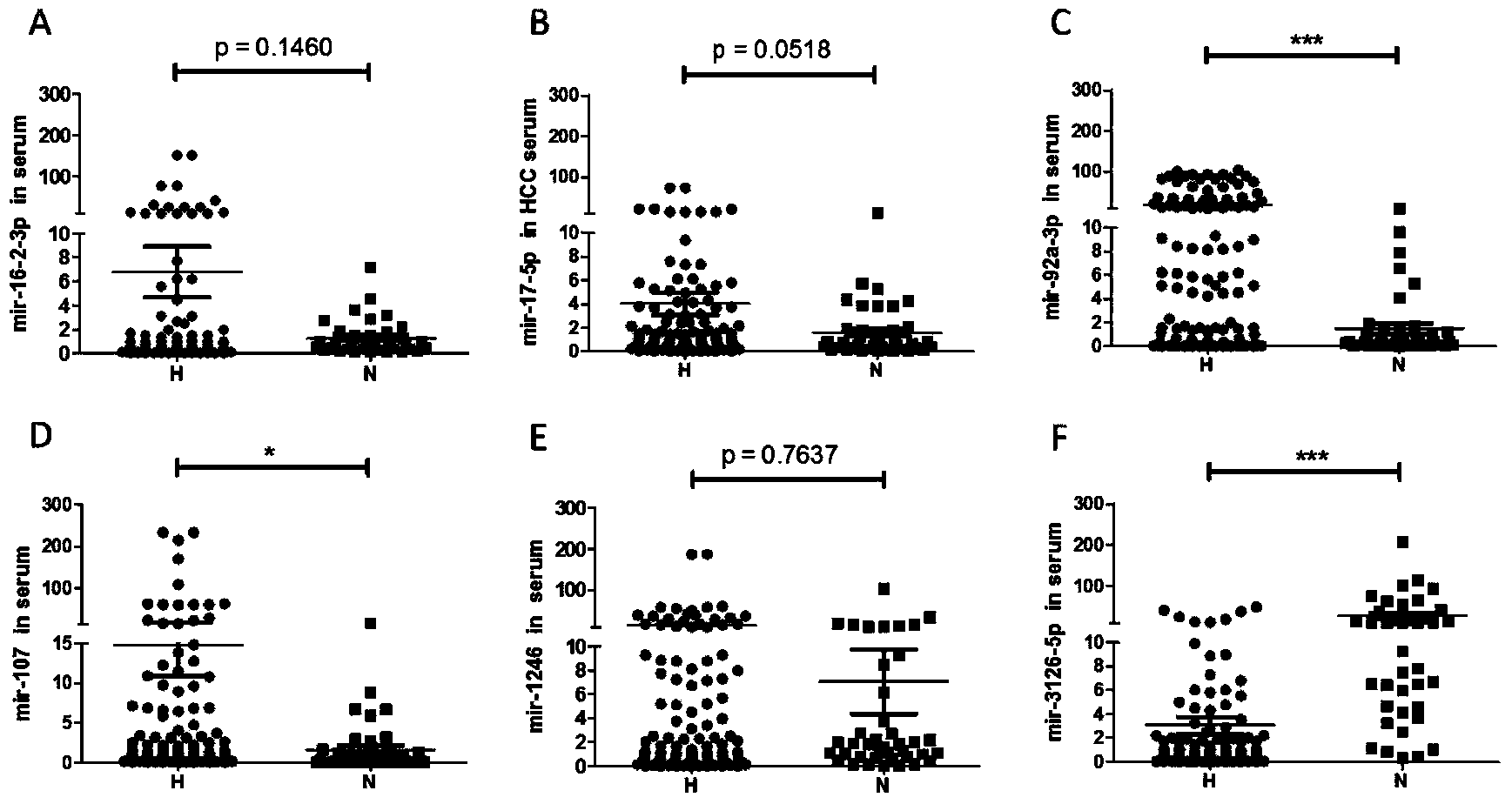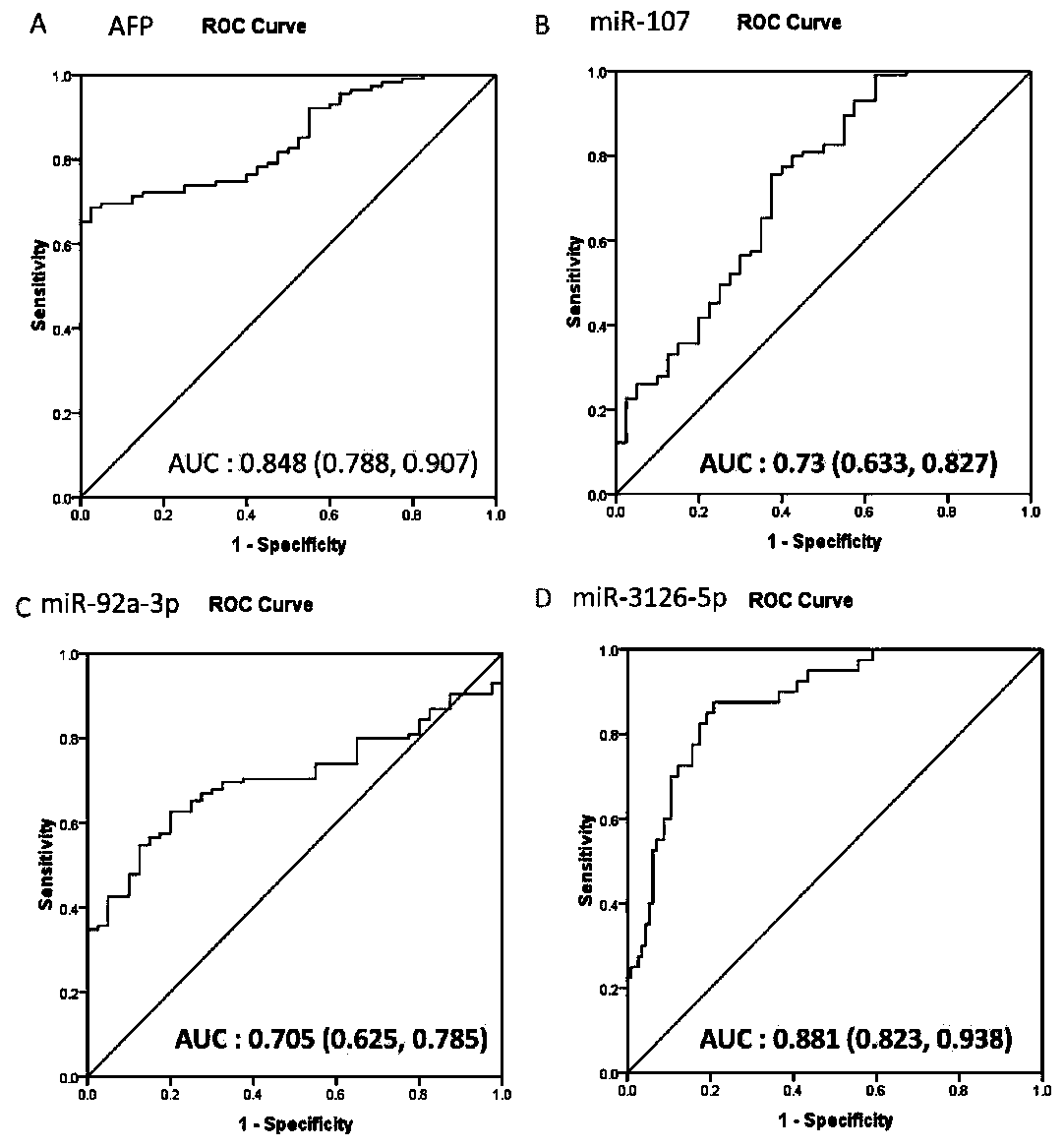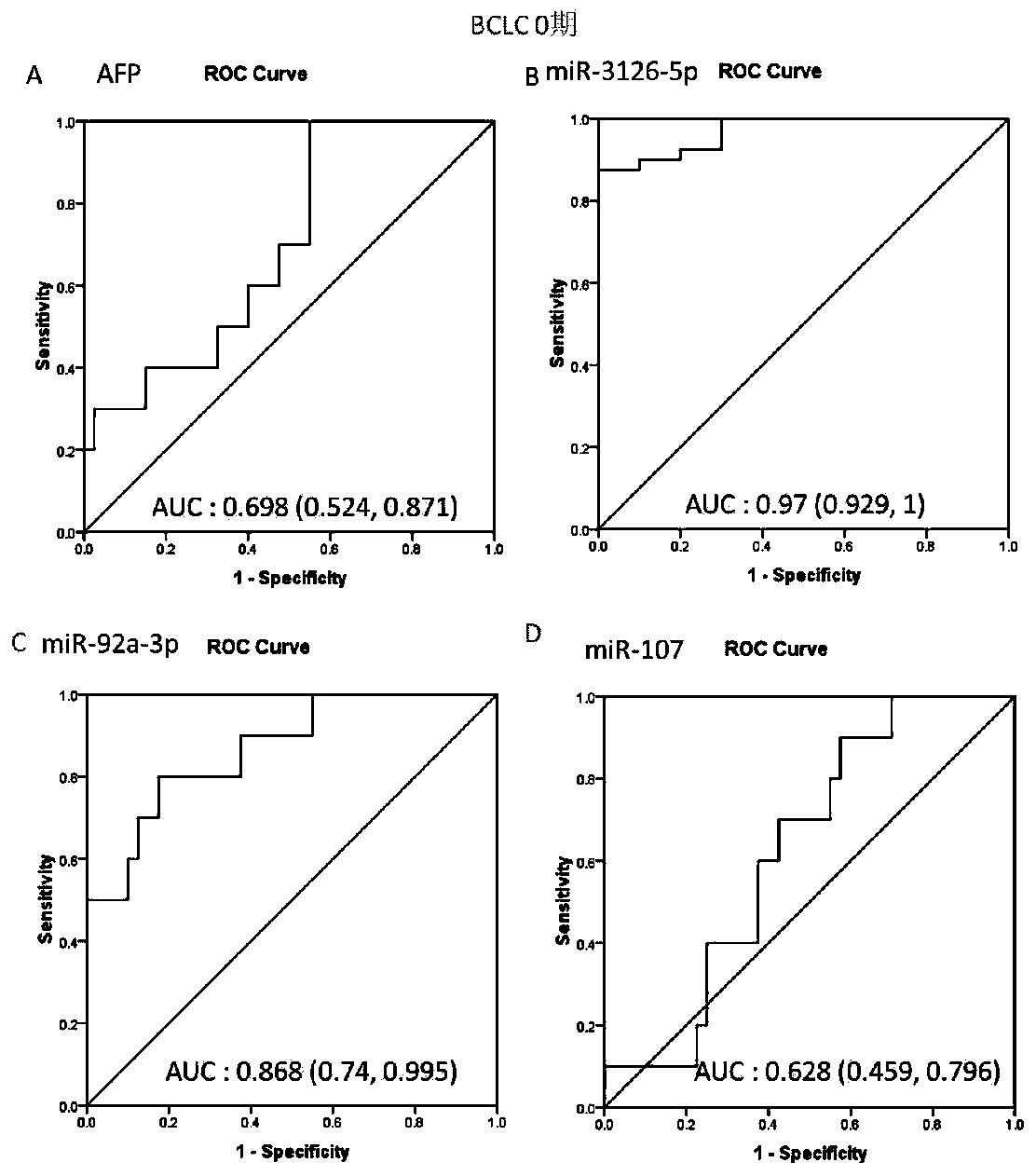Application of microRNA in serum serving as diagnostic marker of liver cancer
A technology for diagnosing markers and liver cancer, applied in the fields of biotechnology and medicine, can solve the problems of small sample size, lack of early-stage liver cancer diagnostic markers, lack of verification, etc., and achieve good sensitivity and specificity.
- Summary
- Abstract
- Description
- Claims
- Application Information
AI Technical Summary
Problems solved by technology
Method used
Image
Examples
Embodiment 1
[0044] Example 1 Serum Sample Collection
[0045] A total of 155 serum samples were collected, including 50 normal human serum and 105 liver cancer patient serum. Serum was collected from the Department of Infectious Diseases, Provincial Hospital of Shandong University. Serum was collected at the time of clinical diagnosis, from March 2012 to November 2013. Serum was collected in coagulation-promoting tubes, centrifuged at 2000-3000rpm for 18-20min, the supernatant was drawn into centrifuge tubes, and stored at -80°C. The clinical case characteristics of the patients are shown in Table 2.
[0046] Table 2 Clinical liver cancer cases and their clinical features
[0047]
[0048] Tumor staging was based on the Barcelona grading standard, 0 and A in BCLC classification were early stage, and B, C and D in BCLC classification were advanced stage.
Embodiment 2
[0049] Example 2 Extraction of serum microRNA
[0050] Proceed as follows:
[0051] (1) Aspirate 400 μl of frozen patient serum, add 750 μl of lysate MRL, and pipette several times.
[0052] (2) Shake the homogenate sample vigorously, incubate at room temperature for 5 min, and carefully transfer the supernatant to a new RNase-free centrifuge tube.
[0053] (3) Add 200 μl chloroform for every 750 μl lysate, cover the sample tube tightly, shake vigorously for 15 seconds and incubate at room temperature for 3 minutes.
[0054] (4) Centrifuge at 12000rpm at 4°C for 10 minutes; the sample will be divided into 3 layers, remove the upper aqueous phase, and transfer to a new RNase free EP tube.
[0055] (5) Add 0.6 times the volume of 70% ethanol, invert and mix well, and transfer the resulting solution and possible precipitates into the adsorption column RA.
[0056] (6) Centrifuge at 10000rpm for 45s, collect the filtrate, add 2 / 3 volume of absolute ethanol, mix by inversion, p...
Embodiment 3
[0061] Example 3 microRNA reverse transcription
[0062] Take 2 μg RNA, thaw at room temperature, and put it on ice immediately after thawing. Prepare the mixture according to Table 3.
[0063] Table 3 Reaction system for microRNA reverse transcription
[0064]
[0065] 37°C, 60min; 85°C, 5min, then put on ice, the obtained microRNA cDNA can be used for subsequent experiments, or stored at -20°C.
PUM
 Login to View More
Login to View More Abstract
Description
Claims
Application Information
 Login to View More
Login to View More - R&D
- Intellectual Property
- Life Sciences
- Materials
- Tech Scout
- Unparalleled Data Quality
- Higher Quality Content
- 60% Fewer Hallucinations
Browse by: Latest US Patents, China's latest patents, Technical Efficacy Thesaurus, Application Domain, Technology Topic, Popular Technical Reports.
© 2025 PatSnap. All rights reserved.Legal|Privacy policy|Modern Slavery Act Transparency Statement|Sitemap|About US| Contact US: help@patsnap.com



